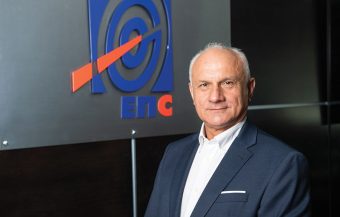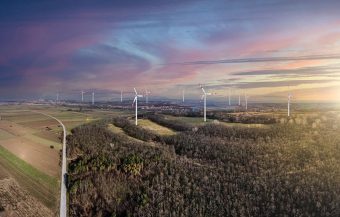
The main goals of the projects that entail the construction of solar and wind power plants are energy supply security and increasing the share of renewable energy sources in our energy portfolio. The Electric Power Industry of Serbia (EPS) plans to revitalize all hydropower plants, and it is determined that by 2030, 45 percent of electricity generated by Serbia’s energy sector will come from renewable sources. Dušan Živković, the General Director of EPS, spoke to Energy Portal Magazine about the implementation of the most significant wind and solar power projects, their financing, the modernization of hydropower plants, the strategically important Bistrica project, as well as new investments and projects.
Q: What are the priority projects for wind and solar power plants? How far along is the implementation of these projects? What are the deadlines for their construction, and when are the facilities expected to be connected to the power grid?
A: The main goals of the projects that entail building solar and wind power plants are energy supply security and increasing the share of renewable energy sources (RES) in our energy portfolio. We are doing this by using the land available to EPS, such as ash and waste disposal sites, to produce electricity in a sustainable and environmentally friendly way. The implementation of these projects and the utilization of remaining hydro potential will contribute to the decarbonization of the power sector and increase the share of RES in EPS’ energy production mix. The most significant RES project is the Kostolac wind farm, which has a capacity of 66 megawatts and is expected to be completed by early 2025. The Petka solar power plant, with a capacity of nearly 10 megawatts, is also expected to be completed by the year-end. Several solar power plants are in the design phase, and they will be built on land owned by EPS or on the land that we have usage rights to. After initial analyses, the drafting of project documentation for the Klenovnik solar power plant continues. Several other projects are in various stages of design or initial analysis, including the Kolubara B, TENT A Ash Dump, TENT B Cassette 3, TENT B – Ash Dump, PK Tamnava East, PK Tamnava West, and Middle Kostolac Island solar power plants.
These solar power plants will be built in locations where EPS already has production facilities, such as power plants and mines, and partially developed infrastructure for future solar power plants, which is why we have a comparative advantage over other investors.
Regarding solar power plants, we should not forget the largest project currently being developed in Serbia. As per the government’s public call for the selection of a strategic partner to build 1 GW solar power plants with a battery storage capacity of at least 200 MW (400 MWh), EPS will manage them once they are finished.
The Kolubara A and Morava solar power plants are expected to be connected to the power grid by 2028, along with the solar power plants that will be built by the strategic partner, which are scheduled for 2028. The Kolubara B and Klenovnik solar power plants are expected to be completed and operational by 2030.
IN FOCUS:
- Sustainability And Development For A Better Quality Of Life
- Legislative Framework of the EU and Serbia for the Energy Transition
- Challenges of Competitive Energy Production in the Global Market
Q: How are the wind farm and solar power plant projects financed? What amounts are allocated for investments?
A: The value of the Kostolac wind farm project is 144 million euros. The European Union provides 31 million euros in grants, EPS allocates 32.2 million euros, while the KfW loan is 80 million euros, and the grant from that bank is 1.8 million euros. The planned investment for the Petka solar power plant is 1.36 billion dinars and is financed by EPS funds.

Following the 28th call for the provision of technical assistance under the EU Western Balkan Investment Framework (WBIF) program and seven calls for co-financing investment projects through WBIF, EPS was awarded a total of 49.02 million euros in non-refundable development assistance for four projects: the revitalization of the Vlasinske hydropower plants (16.1 million euros), the construction of the Kostolac wind farm (31.2 million euros), and the drafting of technical documentation for the development of the Morava and Kolubara A solar power plant projects (860,000 euros each).
In terms of the Morava and Kolubara A solar power plants, the prerequisite for applying was to have an interest in or an already signed credit arrangement with one of the banks from the WBIF program (EBRD, KfW, EIB, World Bank, AFD, CEB).
Q: EPS is shifting towards renewable energy sources and working on further modernization and construction of hydropower plants. What are the most significant projects planned? What is the importance of revitalizing these projects, and how are they financed?
A: EPS plans to revitalize all hydropower plants that have not yet been revitalized. These include Bistrica, Đerdap 2, Potpeć, and the Vlasinske hydropower plants. The revitalization of the Potpeć hydropower plant also includes constructing a new fourth unit. The importance of revitalizing existing hydropower plants is significant, as it extends the operational life of these facilities, which are crucial for the security of the power system and the transition to renewable energy sources. The revitalization of hydropower plants is financed through loans provided by the European Investment Bank (EIB) and the European Bank for Reconstruction and Development (EBRD).
Interview by Mirjana Vujadinović Tomevski
Read the whole interview in the new issue of the Energy portal Magazine ENERGY TRANSITION

